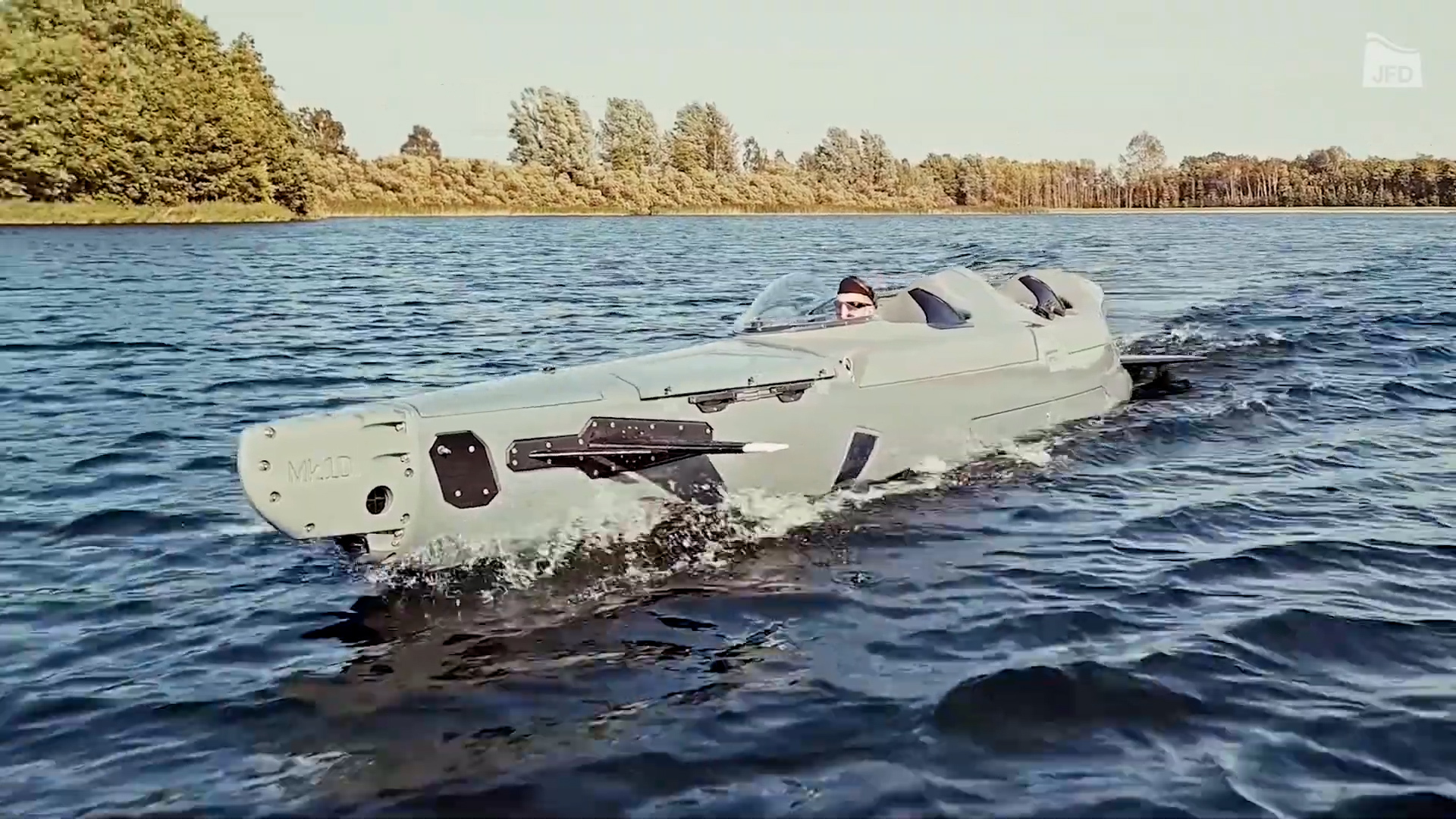
[RYAN ROBERTSON]
EVERYTHING OLD IS NEW AGAIN… WOULD IT SURPRISE YOU TO KNOW THAT PHRASE ITSELF WAS WRITTEN BY AN AUTHOR WHO DIED NEARLY THREE CENTURIES AGO. AND YET, IT STILL RINGS TRUE TODAY. PERHAPS NO MORE SO THAN WHEN IT COMES TO MARITIME WARFARE.
YOU DON’T HAVE TO LOOK BEYOND TODAY’S HEADLINES TO KNOW THE OPEN WATERS OF THE WORLD WILL LIKELY PLAY A LARGE ROLE IN AMERICA’S NEXT CONFLICT.
ALL YOU NEED TO DO IS UNDERSTAND WHAT’S HAPPENING WITH THE IRANIAN-BACKED HOUTHI REBELS IN THE RED SEA.
OR UKRAINE AND RUSSIA SQUARING OFF IN THE BLACK SEA.
AND OF COURSE THERE’S CHINA AND ITS AMBITIONS WHEN IT COMES TO TAIWAN.
AS WE’VE REPORTED BEFORE ON ‘WEAPONS AND WARFARE’ AMERICAN SHIPBUILDING IS AT A MARKED DISADVANTAGE RIGHT NOW WHEN IT COMES TO UNCLE SAM’S NEAR-PEER ADVERSARIES. AND WHILE LEADERSHIP IS WORKING TO CHANGE THAT, IT’S NOT A PROBLEM THAT’S EASILY SOLVED.
[LISA MARIE FRANCHETTI]
“You can see there are the demand signals for the larger Navy that we have out there. We have 88 ships under contract. We have 66 under construction there’s 57 if you look across the fit-up. We know we need a larger Navy. Every study since 2016 has shown that, and I think the most effective way to work on that right now is to invest in our industrial base.”
[RYAN ROBERTSON]
ALL OF THAT MAKES MARITIME INNOVATION INCREDIBLY IMPORTANT. FORTUNATELY, SEVERAL DEFENSE CONTRACTORS ARE BRINGING NEW AND INNOVATIVE SOLUTIONS TO THE TABLE.
COMPANIES LIKE J-F-D WITH THEIR TACTICAL DIVING VEHICLES AND HEFRING MARINE’S A-I DRIVEN SOFTWARE HAVE IDENTIFIED A NEED, AND ARE WORKING TO DELIVER THEIR PRODUCTS TO OPERATORS IN NEED OF THEIR EXPERTISE.
WHILE THEIR CARRIER SEAL AND SHADOW SEAL MAY LOOK LIKE SOMETHING STRAIGHT FROM A JAMES BOND MOVIE, THERE’S NOTHING FICTIONAL ABOUT THEM.
[MATT HARMAN]
“They are designed to take people into an area discreetly, without, you know, any sort of degree of detection. And you know, the quieter and the more, the more sneaky you can do that the better. ”
[RYAN ROBERTSON]
EQUIP PED FOR A CREW OF EIGHT, THE CARRIER SEAL CAN CARRY OUT OVER THE HORIZON MISSIONS.
WITH A SURFACE CRUISING SPEED OF 30 KNOTS, WHICH IS A LITTLE LESS THAN 35 MILES PER HOUR, AND A SUBSURFACE SPEED OF FIVE KNOTS, THE CARRIER CAN NOT ONLY DELIVER OPERATORS AND THEIR EQUIPMENT, IT CAN ALSO BE USED FOR SURVEILLANCE, TARGET ACQUISITION, AND RECONNAISSANCE OPERATIONS.
[MATT HARMAN]
“So you’re scooping out where you might be taking in a troop or a beach landing, simply keeping an eye on the enemy, understanding what they’re up to, or they might be doing, looking for sensors, you know, detecting what other sort of electronic warfare type signals might be out there, through to actually delivering a team who are effectively leading a mission.”
[RYAN ROBERTSON]
FOR MISSIONS A LITTLE SMALLER IN SCOPE, THE SHADOW FITS THAT BILL. BUILT FOR A CREW OF FOUR IT’S CAPABLE OF OPERATING AT NEARLY 80 FEET BELOW THE SURFACE AND, MUCH LIKE THE CARRIER VERSION, CAN EVEN BE DEPLOYED BY PARACHUTE.
[MATT HARMAN]
“The Shadow Seal, you can see over my shoulder here is a direct reproduction of the original commando sleeping beauty that was that was designed by the British in the Second World War, just with massive steroids, you know, it’s like huge range, much more sensors, all the all the crazy, you know, comms kits, and cameras, and all that sort of stuff that you’d expect. So it’s fully electric. And it goes out of a long way. And it goes very quietly.”
[RYAN ROBERTSON]
BUT WHAT ABOUT GETTING THE MOST OUT OF VESSELS THAT ARE ALREADY IN SERVICE? THAT’S WHERE HEFRING MARINE COMES IN. THE ICELANDIC START-UP BROUGHT THEIR INTELLIGENT MARINE ASSISTANCE SYSTEM, ALSO KNOWN AS IMAS (Eye-Mass) TO SOF WEEK 2024.
[KARL BIRGIR BJÖRNSSON]
“This box here is a computer that will essentially connect to all instruments on board will connect to the engines on board and connect to the navigation systems, weather station, any sensors. But then we also place our own sensor, which is inertial measurement units that will capture the full range of motions of the vessel in real-time.”
[RYAN ROBERTSON]
BUT IT’S WHAT HEFRING’S TECH CAN DO WITH THE DATA THAT MAKES IT AN INTRIGUING OPTION FOR OPERATORS. USING REAL-TIME INFORMATION, THEIR A-I MODEL CAN FACTOR IN EVERYTHING THAT’S HAPPENING AROUND THE BOAT TO OPTIMIZE THE PILOT’S SPEED FOR MAXIMUM FUEL EFFICIENCY. HEFRING SAYS THEIR DATA SHOWS ITS FUEL-OPTIMIZED SPEED GUIDANCE AND ANALYSIS CAN REDUCE FUEL CONSUMPTION BY UP TO 25%.
[KARL BIRGIR BJÖRNSSON]
“At a certain point, going faster, that extra knot that you’re trying to go, will start costing quite a lot in fuel consumption. And it’s sometimes and usually, it’s not really worth it. Whether you’re doing 32 knots or 34 knots might not matter that much for the mission profile in general. But it will matter quite a bit for your fuel consumption. And so the model that’s on board here is continuously trying to figure out what does that curve look like? In real time based on the environment that you’re operating in right now based on how the vessel is moving what the engines are doing in order to react to that?”
[RYAN ROBERTSON]
THE NEXT PART OF THE IMAS EQUATION IS PASSENGER SAFETY. NOT ONLY HELPING PILOTS ADJUST COURSE FOR BAD WEATHER, KEEPING THE CRAFT AND CREW OUT OF HARM’S WAY, BUT OPTIMIZING SPEED TO MAKE FOR A SMOOTHER RIDE. MINIMIZING RIDE IMPACT FOR THOSE ON BOARD.
[KARL BIRGIR BJÖRNSSON]
“There was a US Marine Corps, or former US Marine Corps guy who’s here yesterday, completely sold on what we’re doing here, because he recognizes the need for it. So 23 years old, when he started out on high-speed boats and at the US Marine Corps. And today, at 45, realizes how big of an impact that had on his body being out there being exposed to the environment being exposed to the heavy impacts that happen out there when you do in high speed, and you’re jumping off a wave consistently. Now, as a, you know, injured back, bad knees, it takes its toll on people.”
[RYAN ROBERTSON]
NO WORD YET FROM HEFRING ON ANY DEALS WITHIN THE D-O-D, BUT IN THE LAST SIX MONTHS THEY HAVE REACHED AGREEMENTS WITH THE ICELANDIC ASSOCIATION FOR SEARCH AND RESCUE, SAFE BOATS INTERNATIONAL AND SECURED A NEW ROUND OF FUNDING OF MORE THAN TWO MILLION EUROS.











